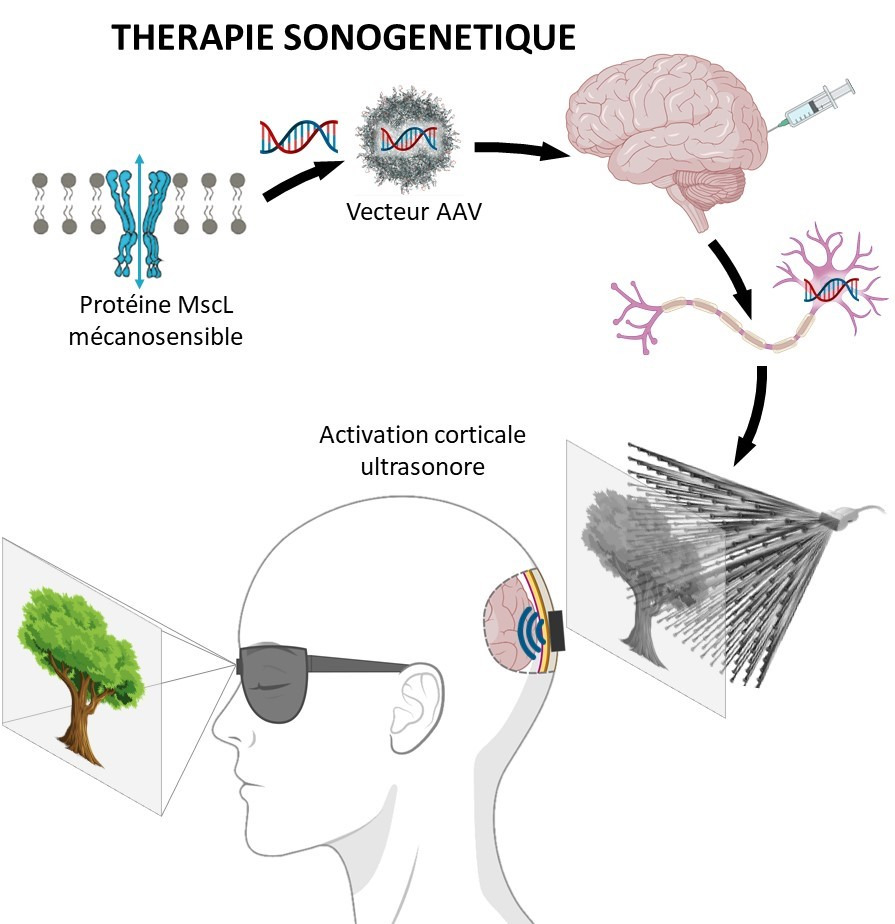Published on
Updated
Reading 3 mins.
According to a new French study, a new technique based on genetic modification of neurons and ultrasound could, in the long term, restore the vision of patients whose optic nerve is affected. Tested for the moment in mice, sonogenetics promises to be a hope for all those who have lost their sight.
Could a new technique restore sight to people with glaucoma, diabetic retinopathy or optic neuropathies? According to an Inserm press release published on April 3, there is hope, thanks to a therapy, combining genetics and ultrasound, which has worked for the moment on rodents.
What is sonogenetics?
According to the Inserm press release, this “sonogenetic” therapy consists of “to genetically modify certain neurons in order to be able to activate them remotely by ultrasound”. These ultrasounds can, without any contact, access tissues in different areas more or less in depth, and in particular in the visual cortex, the area which integrates visual information.
This technology had previously been tested in culture and the first in vivo tests had not made it possible to become aware of its therapeutic potential linked to its very high spatiotemporal resolution. It is now done.
Activate neurons remotely with ultrasound
Conducted on rodents, rats and mice, by the research team, sonogenetic stimulation of the visual cortex in fact induced a behavioral response associated with light perception. Beforehand, the animal learned to look for a drink as soon as it perceived a light source. Upon ultrasound stimulation, the rodent sought to drink, its behavior suggesting that stimulation of its cortex induced light perception. The therapy worked on different types of neurons, whether located in the retina or in the visual cortex of rodents, showing the universal nature of this approach.
“By converting the images of our environment into the form of a coded ultrasonic wave to directly stimulate the visual cortex, and this at rates of several tens of images per second, sonogenetic therapy appears to offer real hope for restoring sight. patients who have lost optic nerve function” says the press release.

Restoring sight to patients without a solution
Contacted by Doctissimo, Serge Picaud, director of research at Inserm and the Institute of Vision (Sorbonne University/Inserm/CNRS) talks about the pioneering nature of this new technique:
“Other studies had shown that we could activate neurons with ultrasound, but they had never shown that this approach had a spatial resolution and a temporal resolution in animals, which make it possible to do this type of therapy, like visual restoration.”
Other studies are however still necessary to hope for an application in humans, but nothing seems impossible for the researcher: “There is still an important step to take, that of showing that with this strategy we can make animals see shapes and movements. Once we have demonstrated this, we can move on to human studies”.
The hope is immense, because if the results are confirmed, this therapy could succeed in restoring the sight of patients in a stable and safe way.
Towards a new generation of brain-machine interface
But beyond a great advance in the face of vision problems, a whole field of applications seems to be opening up thanks to this sonogenic therapy.
This sonogenetic stimulation approach offers an innovative technology to interrogate brain function. Unlike current prostheses or neural stimulators, its “contactless” and cell type selective operation represents a major innovation compared to devices with electrodes, as confirmed by Serge Picaud.
“This expands what is called the brain-machine interface, which involved stimulating the brain through electrodes. Here, we show that it can be done without an electrode and at a distance. Our gene therapy expresses an ultrasound-sensitive protein. The interest is that we can completely restrict activation to certain neurons, which we cannot do with the electrode. We are moving into a new generation of interface, which why not, will be capable of other applications when we have to stimulate areas of the brain. Neurostimulation in the face of Parkinson’s disease in particular could benefit from it”.
